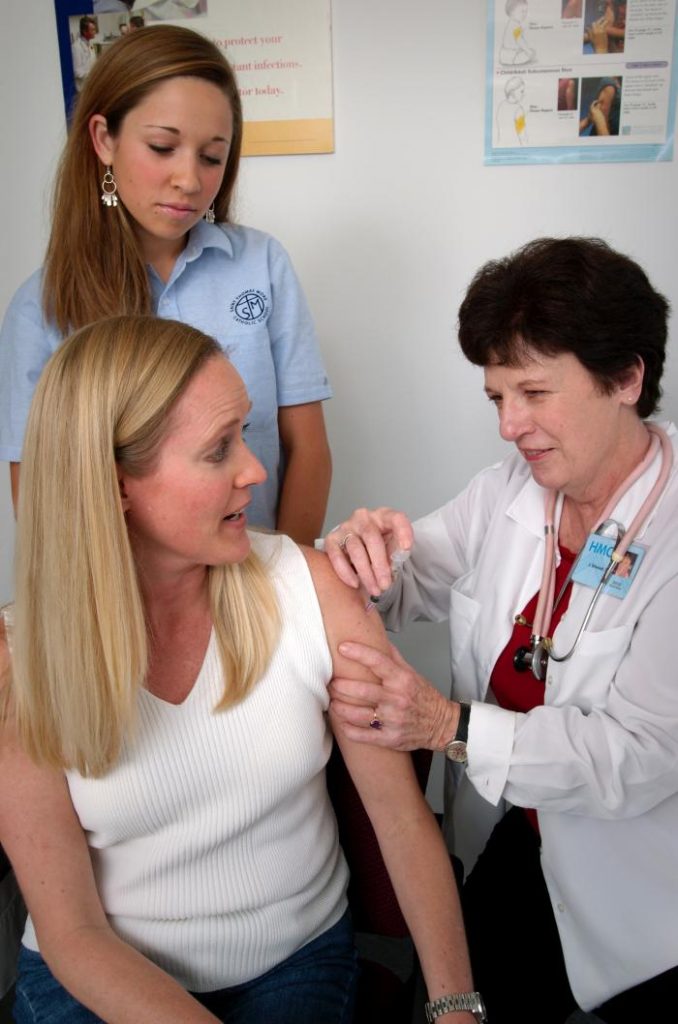In a follow-up to the mumps outbreak among students and staff at the University of Iowa in Iowa City, the school is reporting that the number of mumps cases on campus is over 100, nearly doubling in the past month.

Student health at Iowa has announced a number of free vaccine clinics in the next week and a half for the measles-mumps and rubella (MMR) vaccine. Health officials are recommending that students younger than 25, who are at the highest risk for mumps, receive a free third dose of the MMR vaccine.
The vaccine clinics will be held at the following locations, dates and times:
- Tuesday, Nov. 10: Iowa Memorial Union Main Lounge – 10 a.m. to 7 p.m.
- Wednesday, Nov. 11: Iowa Memorial Union 2nd Floor Ballroom – 10 a.m. to 7 p.m.
- Monday, Nov. 16: Burge Hall – 11 a.m. to 2 p.m.
- Monday, Nov 16: Mayflower Hall – 4 p.m. to 9 p.m.
- Tuesday, Nov. 17: Hillcrest Hall – 4 p.m. to 9 p.m
Mumps is an acute infectious viral disease that can cause swelling and tenderness of the salivary glands in the cheeks and jaw.
The virus is spread from person to person by coughing and sneezing and by direct contact with saliva and discharges from the nose and throat of infected individuals. Mumps is contagious three days prior to and four days after the onset of symptoms.
Symptoms of mumps usually appear 14 days to 18 days of infection. They usually include fever, headache, and swelling and tenderness of one or more of the salivary glands, usually the parotid gland (located just below the front of the ear at the angle of the jaw). In mild cases the swelling may only last for three days to four days, but it may go on even up to a week or more. Approximately one-third of infected people do not exhibit symptoms. There is no specific treatment for mumps.
Most complications that may arise involve other organs. Mumps can cause pain and swelling of the testicles, deafness and arthritis. It can cause central nervous system disorders such as encephalitis (inflammation of the brain) and meningitis (inflammation of the covering of the brain and spinal column).
According to the Centers for Disease Control and Prevention (CDC), as of Oct. 31, 641 mumps cases have been reported.
Robert Herriman is a microbiologist and the Editor-in-Chief of Outbreak News Today and the Executive Editor of The Global Dispatch
Follow @bactiman63
Related:


how many if the 100 cases were already fully vaccinated?
It is not well understood how vaccines work. This is a quote from the first paragraph of a 20 page report on vaccines by the World Health Organization:
“To generate vaccine-mediated protection is a complex challenge. Currently available vaccines have largely been developed empirically, with little or no understanding on how they activate the immune system. Their early protective efficacy is primarily conferred by the induction of antigen-specific anti-bodies.” http://www.who.int/immunization/documents/Elsevier_Vaccine_immunology.pdf
Empirical evidence is concerned with observation or experience, rather than theory or pure logic. This means that what many people are calling science is actually statistics. Scientists count the results and make a determination, a judgment as to whether a vaccine is effective.
We do understand an injection with a ‘dead’ piece of virus and an adjuvant like mercury or aluminum creates an autoimmune response. An organism won’t have a reaction without the neurotoxin involved because the virus is dead. However, not every human reacts the same way to a neurotoxin being injected into his or her veins.
Human activity has distributed many toxins throughout the world and our local environments. I believe that we should take into account genetics, current health status, and an individual’s current toxic load before adding more toxins into a human body.
There is a long history of mercury poisoning in modern medicine. As recently as the 1950’s the pharmaceutical industry was ordered to stop poisoning so many people with mercury and
calomel. (Calomel is a mercury compound) See http://www.mercuryfreekids.org/eli-lilly/
Let’s work together to make sure everyone is safe to receive a vaccine before the vaccine is administered.